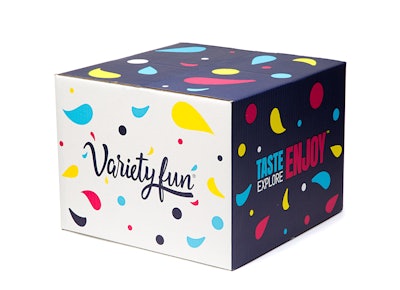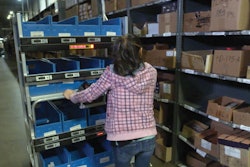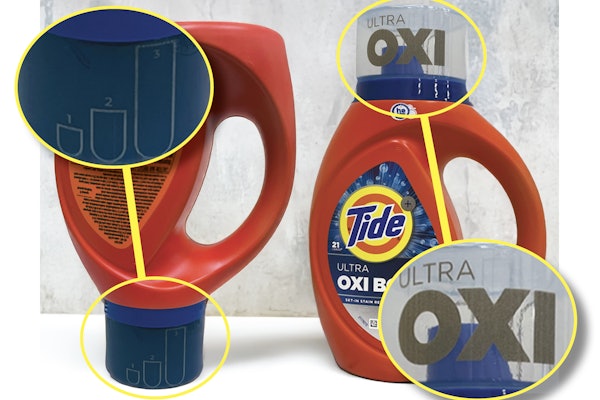Since the first e-commerce subscription boxes launched a decade ago, consumers have proven their eagerness to receive regularly scheduled shipments of products—including personal care, food and beverage, pet care, clothing, and countless other items—without having to reorder them. According to a 2018 McKinsey & Co. report, the e-commerce subscription market grew by more than 100% over five years, with the largest retailers generating more than $2.6 billion in sales in 2016, up from $57 million in 2011.
But the subscription market has not been without its perils for brand owners. Many companies have fallen by the wayside after failing to provide consumers with “superior end-to-end experiences,” according to McKinsey. Among the most popular subscription services are those that provide curation, at 55%, where new items or highly personalized experiences are selected “to surprise and delight,” says the report. Other subscription types include replenishment, at 32%, and access, where subscribers pay a monthly fee to obtain lower prices or members-only perks, at 13%.
In 2016, entrepreneur Yoni Pinhasov created a curated snack subscription company called Variety Fun along with co-founders Ilya Avshalumov, now CEO; Sam Avshalom, COO; and Albert Avshalumov, advisor. Now president of the company, Pinhasov says he was inspired by variety packs of K-Cup coffee and tea pods. “When I did a bit of research, I realized no one was really doing that with snacks,” he says. “So my business partners and I decided this was the way to go. We came up with a variety pack for consumers with different snacks and different themes, and it was a great success.”
In fact, the first batch of products sent to Amazon were snapped up by consumers in one day. In 2017, the company sold more than 600,000 snack boxes to offices and individual consumers and reached sales of $12 million. In 2018, that number rose to $18 million. Along the way, Variety Fun expanded its snack assortments and upgraded its packaging over three iterations to provide the optimal consumer experience.
Snack assortments provide the variety
Variety Fun’s beginnings were both humble and low-tech. While the idea of providing an assortment of snack brands in one box via e-commerce may have been novel, the process of buying snacks in bulk and manually packing a mix of them in corrugated boxes was a pretty straightforward operation. When it first launched, the company’s packing operations were located in a basement in a residential building in Brooklyn, NY.
Today Variety Fun has two warehouses with 30 employees. “We have a very robust system in which we create work orders for each physical order, and all the employees know exactly which specific snacks go into each box,” explains Pinhasov. The boxes move through the facility guided by a barcode system, with warehouse managers checking each box to make sure the count and the product mix are correct.
Not only have Variety Fun’s facilities greatly expanded, but its snack options have grown significantly as well. Its first boxes were a mix of snacks from larger, more traditional snack companies. As the business gained traction, the company began reaching out to other brands, including those providing healthier snacks. “As we were growing, we noticed more and more requests for healthier snacks,” says Pinhasov. “We had a lot of requests for vegan snacks, gluten-free snacks, and non-GMO snacks. Now we get a lot of requests for keto snacks and paleo snacks, and we make sure we have all of this available for our customers.” He adds that when the business began, 80% to 90% of the company’s customers preferred classic snacks. Today that number is more like 50% traditional and 50% healthier options.
From its inception, the company has differentiated itself through the scope of snacks it provides. Its product range includes both salty and sweet products, including cookies, chips, candy, crackers, pretzels, popcorn, snack bars, nuts, and other treats. Ever on the hunt for new vendors and “new, cool products,” Pinhasov and his partners have assembled more than 400 different brands, with some offering from 15 to 20 flavors each.
“When we send a pack of 40 or 50 different snacks, we make sure there is a huge variety in terms of the different flavors. There will be 80 percent to 90 percent different items in there,” Pinhasov explains. “We don’t send multiples, because we want our customers to try new brands they’ve never had before. This way, we actually help other brands, new businesses, that partner with us.”
Packaging provides the fun
Variety Fun is both a B2B and B2C business, offering single and subscription orders to both. Initially, its boxes were sold only on Amazon as a one-time purchase, where Variety Fun created the boxes ahead of time and sent them to Amazon warehouses, and Amazon made them available as pre-existing bundles. Variety Fun now offers 300 SKUs through the e-commerce giant. “Some of our customers refer to them as care packages, because they usually buy them for soldiers or students,” says Pinhasov.
In late 2017, Variety Fun began offering a subscription service for offices through Amazon. By late 2018, it had more than 6,000 subscribers. Since then, the company has launched its own subscription site for home or office delivery. Options for home include a 25- or 40-ct box of classic snacks, or a 15- or 30-ct box of healthy snacks, delivered once or twice a month. For the office, it offers 200-ct boxes of classic or healthy snacks, with the same frequency options.
While the snacks are the star of the show, Variety Fun realized not long after launching the company that good secondary packaging design is vital as well. “We started with a simple, white carboard box, and we’d put a sticker on it,” says Pinhasov. “We learned through the process that we needed a stronger box, something that would survive the shipping process.”
From the outset, the company was looking to partner with a leading box supplier for their packaging, but they didn’t have the volume. Six months after starting the business though, they were ready to commit to 100,000 boxes. Packaging supplier President Container Group helped them develop a roll-end tuck-type (RETT) box that provides the needed strength and delivers a better overall experience for the customer. “It is not cost-effective—it is a little more expensive than what we were using,” says Pinhasov. “But at the end of the day, we are all about the customer, and we want the package to arrive in one piece, in good condition.”
The RETT box was then joined by RSC styles that hold a greater number of snacks. To ensure the integrity of the boxes during shipping, drop tests were done, and Variety Fun sent shipments to themselves and to friends and family across the country. Says CEO Ilya Avshalumov, “After years of experience with shipping millions of boxes, we have found the perfect balance between weight and size to reduce the number of damaged products during shipping.”
In 2018, Variety Fun went through a rebranding that included the creation of all-new boxes to correspond with the launch of its subscription-based site. The company now uses the die-cut box for its home customers and an RSC for its office customers. “There are eight different sizes, depending on the number of snacks each box contains,” explains Avshalumov.
Graphics for the packaging were also updated in 2018 by the company’s in-house design team. The goal was twofold, explains Pinhasov: to bring a smile to the consumer’s face, even before they open the package, and to reinforce the Variety Fun brand.
With the redesign, Variety Fun went from a one-color box with 15% to 20% coverage to one with full-color printing over close to 90% of the box. Colors include yellow, pink, white, and two shades of blue. The Variety Fun logo is front and center, and the side of the box features big bold copy that reads, “Taste Explore Enjoy.” Pinhasov says the colors were chosen to match the beautiful colors of the snacks inside the box and to “bring joy and smiles to the faces of those people opening the packaging.”
“Currently we are on the third phase of boxes,” adds Avshalumov. “We took it a step further by introducing more colors to our boxes, four colors outside, and one color inside, in order to really stand out and create a better customer unboxing experience. This is rare in the online subscription industry. When most companies are focusing on creating a cheaper box, we went the other route.”
Just as club stores work to provide a “treasure hunt” for their customers, e-commerce companies are packaging their products to provide an experience similar to receiving a gift, replete with the expectation and excitement. Strategies include branded secondary cases—as in the case of Variety Fun—products wrapped in tissue paper or ribbon, and thank you notes, to name a few. Because many of Variety Fun’s products are actually being purchased as gifts, the die-cut RETT box provides the perfect format. “Once you open the top, you see all the snacks neatly packed by our employees inside, facing you,” Pinsahov says. “It looks like a present.”
Another purpose of the new packaging graphics is to keep the Variety Fun brand in front of the customer. “We realized that when people were opening the box, the snacks were what was capturing most of their attention,” says Pinhasov. “We are a relatively new company, and we work with really big brands in terms of the snacks. So it was extremely important for us to create an experience in which the consumer understands it’s not only about the snacks they receive, but also about the partnership they have with us.”
The box’s vibrant colors and use of branding also add to its visual appeal in unboxing videos. In fact, Pinhasov says that reviewing YouTube videos from its customers helped the company learn how to improve its packaging.
Continued growth ahead
So far, Variety Fun has found the right combination of product and packaging to keep existing customers coming back and compel new customers to sign on. And Pinhasov believes the company, and the e-commerce subscription business in general, will only continue to grow.
“People are always looking for more convenient ways to shop,” he says. “For something like snacks, which most households buy, they want to take less responsibility for ordering them every month. That’s why a subscription service is perfect for them.”
Curated subscription services also have a bright future due to the excitement they generate. “When consumers subscribe to something like paper towels or toilet paper, there’s not that much excitement,” says Pinhasov. “But when they subscribe to something like snacks, the fact that they’re going to be getting and trying new items in every single box creates huge excitement. Although they know what they will be receiving, at the same time, they don’t know exactly what’s going to be inside. That creates a surprise—it’s like Christmas all over again. And that’s what we’re all about.”


























